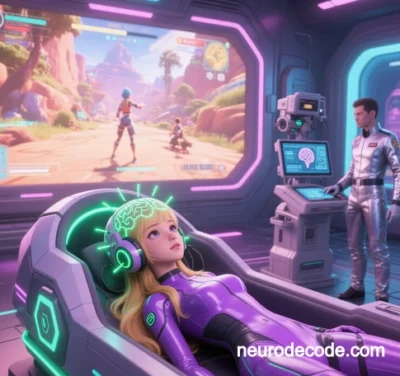
Applications of Neural Signal Decoding and Brain-Computer Interfaces
Neural signal decoding (Neuro-decode), the core technology of brain-computer interfaces (BCIs), translates neural activity into executable digital commands or interpretable biological behaviors. Their overlapping and complementary applications span healthcare, rehabilitation, human augmentation, and human-machine interaction. Below is an analysis across four dimensions: medical applications, functional enhancement, research, and ethical challenges.
I. Medical Applications: From Disease Management to Neural Repair
- Motor Function Restoration
- Paralysis and Spinal Cord Injuries: Microarray decoding of motor cortex signals enables patients to control robotic arms or exoskeletons for grasping and walking. For example, Stanford’s system allows paraplegic patients to operate robotic limbs at near-natural speeds.
- Brain-Spinal Interface Fusion: Fudan University’s Brain-Spinal Interface (BSI) decodes motor signals in real time and converts them into spinal electrical stimulation, reactivating muscles for autonomous walking in paralyzed patients.
- Communication Recovery
- Aphasia Therapy: Tsinghua University’s Brain-LLM framework aligns neural signals with language representations, converting brain activity into text or speech with minimal error rates, aiding ALS patients in regaining basic communication.
- Speech Synthesis: Caltech’s brain-speech interface decodes auditory cortex activity to synthesize natural speech at conversational speeds.
- Mental Health Interventions
- Depression Treatment: USC’s closed-loop emotion-decoding chip adjusts deep brain stimulation parameters, halving the time required to reduce depressive symptoms.
- Epilepsy Management: LSTM-based algorithms detect pre-seizure signals with high sensitivity, enabling timely intervention via closed-loop stimulation.
- Neurodegenerative Disease Monitoring
- Early Alzheimer’s Diagnosis: Decoding hippocampal theta-wave abnormalities via fNIRS and EEG, combined with machine learning, predicts cognitive decline years before symptom onset.
II. Functional Enhancement: From Compensation to Cognitive Augmentation
- Sensory Expansion
- Artificial Vision and Hearing: Retinal implants generate visual patterns for the blind, while cochlear-cortical interfaces enhance speech recognition in noisy environments.
- Tactile Feedback: MIT’s prosthetic limbs integrate pressure sensors and thalamic decoding to simulate temperature and texture sensations.
- Cognitive Optimization
- Memory Enhancement: DARPA projects use hippocampal theta-wave decoding and closed-loop stimulation to boost short-term memory capacity.
- Attention Training: Neurofeedback systems monitor prefrontal alpha waves, improving focus in ADHD patients through gamified interfaces.
- Human-Machine Collaboration
- AR Control: Motion imagination decoding and eye-tracking enable gesture-free AR navigation (e.g., pilots switching cockpit displays via thought).
- Metaverse Interaction: Neuro-metaverse platforms allow users to create virtual objects or trigger emotions directly through neural signals.
III. Research and Industry: From Labs to Real-World Impact
- Neuroscientific Exploration
- Dream Analysis: Kyoto University combines fMRI decoding and generative AI to reconstruct dream imagery, revealing default mode network dynamics.
- Neuroeconomics: Ventral striatal dopamine signal decoding quantifies risk preferences to refine financial algorithms.
- Industrial and Security Applications
- High-Risk Work Safety: Non-invasive BCI helmets detect fatigue-related brainwaves (e.g., theta waves) to alert miners of operational risks.
- Covert Communication: Military projects like “Silent Talk” enable secure neural communication between soldiers.
- Consumer Technology
- Gaming: Valve’s NeuroSteam headset uses motor cortex decoding for controller-free FPS gameplay.
- Smart Home Control: SSVEP systems let paralyzed users adjust lighting or temperature via gaze.
IV. Ethical and Technical Challenges
- Privacy and Security
- The EU’s Neurotechnology Ethics Whitepaper mandates k-anonymity standards to protect neural data.
- MIT advocates “neural data sovereignty” to restrict unauthorized interpretation of high-level cognition.
- Technical Limitations
- Signal Fidelity: Implanted electrodes struggle with high-frequency signal decay; graphene heterostructures may offer solutions.
- Multimodal Integration: Synchronizing electrical, chemical, and optical signals remains algorithmically complex.
- Societal Equity
- Augmentative BCIs risk exacerbating social stratification; equitable access frameworks are critical.
V. Future Trends: Interdisciplinary Innovation
- Quantum Neural Decoding
IBM and Harvard are developing quantum annealing algorithms to model large-scale synaptic networks. - Synthetic Bio-Interfaces
Neuralink aims to engineer astrocytes as living signal amplifiers. - Photonic-Electronic Imaging
Combining optical coherence tomography (OCT) with AI achieves micron-scale 3D brain mapping.
Conclusion
Neural decoding and BCIs have evolved from single-function tools to multimodal, cross-layer systems. Their medical value lies in precise neural modulation and functional restoration, while cognitive augmentation pushes human potential. Guided by ethical frameworks like the EU’s whitepaper, the field is transitioning toward responsible innovation—balancing precision with privacy, security, and equity.
Data sourced from public references. For collaboration or domain inquiries, contact: chuanchuan810@gmail.com.




